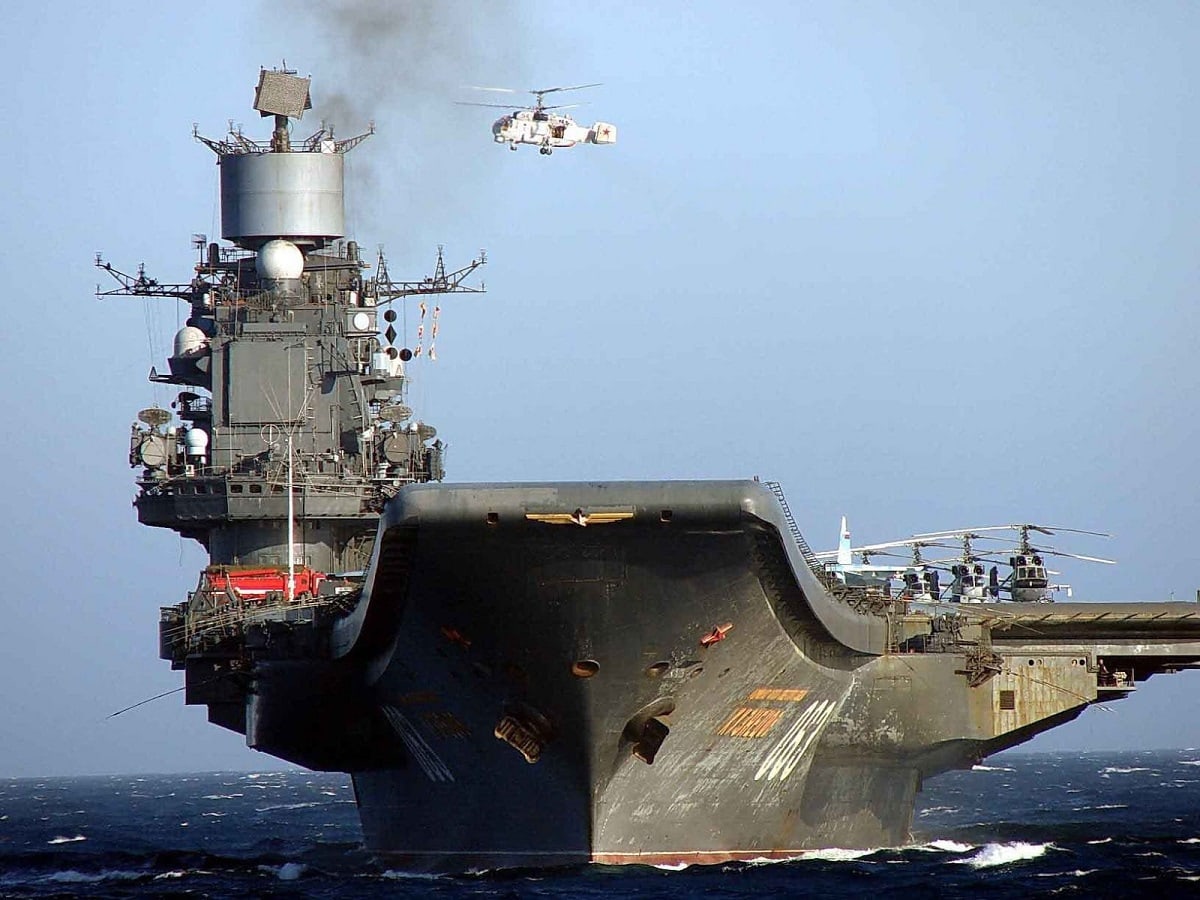Russia‘s only aircraft carrier, which is technically a heavy aircraft cruiser, is not operational. The Admiral Flota Sovetskogo Soyuza Kuznetsov is officially the flagship of the Russian Navy. But it has not actually carried the flag since 2018, when the warship was taken out of service for a refit. The Admiral Kuznetsov instead resided at the 35th Ship Repair Plant in Murmansk, and it was initially scheduled to return to duty by 2020.
According to recent reports, the Admiral Kuznetsov might finally return to open waters to begin sea trials in September.
A Series of Unfortunate Events
In November 2018, the Admiral Kuznetsov was damaged when a 70-ton floating crane fell on the warship’s flight deck, killing one worker and injuring four more. Just over a year later, fire broke out in the engine room during a welding accident. Two people died, while 14 suffered injuries from fire and smoke inhalation.
The actual drydock, which was vital to the repairs, was also damaged during a power outage, further delaying the refit. In addition to this series of unfortunate accidents, corruption has contributed to the lack of progress on the carrier’s refit. In March 2021, Yevgeny Zudin, general director of Shipyard No. 10 in Polyarny, was arrested under suspicion of the theft of 45 million rubles (approximately $600,000) that had been allocated to the repair of the Russian Navy’s Northern Fleet warship.
Moscow Stayed Committed
Despite all the drama, the Kremlin is committed to the carrier. Earlier this month Moscow announced that the Admiral Kuznetsov had been moved to a drydock at the Sevmorput Naval Shipyard, in the country’s northwestern Murmansk region.
According to a report from Tass, repairs are expected to last until September.
“The task now is to set it afloat until the ice forms, otherwise everything will be delayed until 2023,” a defense industry source told Tass. The source added that Russia’s United Shipbuilding Corporation has not confirmed the timeline.
However, on Monday, Norway-based The Barents Observer reported that oil is leaking in the new dock built to repair the ill-fated carrier. The origin of the oil has not been identified, but reportedly it could come from older leaks in the ground where the facility was set down. Two smaller land-based docks have operated there previously, and those facilities repaired submarines and surface warships. The new drydock needed a single basin large enough to accommodate the aircraft cruiser. Based on social-media posts – as reported by TheDrive – building the drydock was quite an ordeal, and it is only now finally able to accommodate the warship.
Whether all this effort is worth the time and money remain the biggest question.
Upgrades of the vessel’s weapons, electronics, and aircraft support equipment are only expected to extend the Soviet-era warship’s service by about five years.
The Russian navy already lost a flagship in the Black Sea earlier this year, but it might do best to cut its losses in this case.
Now a Senior Editor for 1945, Peter Suciu is a Michigan-based writer who has contributed to more than four dozen magazines, newspapers and websites. He regularly writes about military hardware, and is the author of several books on military headgear including A Gallery of Military Headdress, which is available on Amazon.com. Peter is also a Contributing Writer for Forbes.

